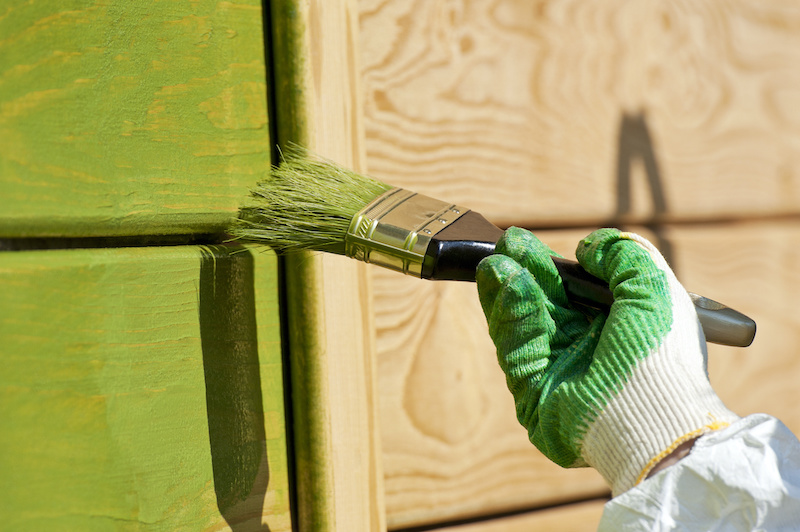Lead paint. Everyone knows that it’s dangerous. Not everyone knows how to spot it, though. Or what to do if they find it.
From the way it causes learning impairments in children, to the fact that it can cause anemia and even brain damage in adults, this once common paint is now widely avoided.
But as we said, lead was once a common ingredient in paint. And as a result, it can be hard to avoid sometimes, regardless of our efforts.
So what can we do about that? How can we tell if the house we’re looking at has lead-based paint inside of it? Luckily for us, there are some easy ways to spot it.
The Hazards of Lead-Based Paint
Lead paints can cause a variety of health problems. For one, lead is a highly toxic heavy metal, and exposure to it can be dangerous. Exposure can cause anemia. In high enough quantities, it can cause cognitive impairment and even poisoning.
Lead is also highly toxic to young children. Even in small quantities, it can cause serious developmental issues. There is currently no known safe level of lead exposure, which means the presence of any in your home is cause for concern.
Exposure usually happens through ingestion. If the paint is old enough, however, it can chip and turn into dust. Breathing this dust can cause the same negative health problems as ingestion.
For this reason, finding and resolving lead paint in your home is very important.
How to Spot Lead-Based Paint
Unfortunately, it isn’t as simple as just looking at the paint. Lead-based paint, on the surface, doesn’t look any different than other paints.
However, there are some telltale signs that should raise your suspicions about its presence in your home.
First of all, if you’re buying an older house, the odds are good that there is lead paint somewhere inside. As a general rule, if the house was built before the 1980s, it’s pretty likely to have lead paint somewhere.
Lead paint was outlawed completely in 1978, so you shouldn’t find any in houses built after that time. Still, allowing a buffer of a couple of years is a good idea.
There’s one more major sign that is indicative of the presence of lead in your home. Lead paint, when it’s in good condition, is indistinguishable from normal paints.
But when it begins to chip off the walls, lead paint does so in a unique and identifiable manner.
If the paint on your walls is peeling, look to see if it is doing so in a scale-shaped pattern. Referred to by professionals as “alligatoring”, this unique look is a direct indicator that the paint in question contains lead.
Of course, a careful homeowner will paint over chipped or peeling paint. Because of that, this method can be hard to apply. But if you ever see it, take note immediately. Alligatoring is a sure sign of lead paint.
Test for Lead Yourself
If you have suspicions about the presence of lead paint in your home, the easiest and cheapest thing to do would be to buy a lead testing kit.
Lead testing kits are not that expensive, and are relatively easy to use.
There are two testing kits that are approved by the EPA: 3M Lead Check Swabs and Klean-Strip D-Lead testing kits. These kits make use of chemical solutions that you apply directly to the paint, which will change its color if there is any lead in the paint.
These are cheap, inexpensive, and relatively easy ways to check your home for the presence of lead paint.
Hire a Home Inspector
Of course, we all make mistakes sometimes. If you don’t feel comfortable performing the tests yourself, the best way to check your home is to hire a home inspector.
Home inspectors look at your entire home, so they may spot a different problem you didn’t know you had. That’s always a nice plus.
When it comes to testing for lead paint, home inspectors have more tools, and better tools, than an average person can get their hands on. They can make use of an XRF, or x-ray fluorescence machine, which will closely scan the paint using x-rays to look for the presence of lead within deep layers of paint.
They will also often take paint, dust, and soil samples from the property, which are sent back to a lab for detailed testing.
These professional tools are more thorough than the tools available on the commercial market, and the laboratory testing ensures that it is checked by experts every step of the way.
Plus, a home inspection can catch other problems that may be present in the home as well. That’s a win-win situation.
Get Your Home Inspected For Lead Paint Today
Lead-based paint is a serious health hazard, and needs to be taken seriously by homeowners. Whether you’re purchasing a home, or are concerned about your current home, checking for lead paint is an investment worth the time and money.
There are plenty of ways to go about it. Personal use testing kits are readily available and relatively inexpensive. A professional home inspection will find lead paint if it is present, and may help to spot other issues as well.
Finding the right home inspector is as important as the inspection itself, however. Here at Class Home Inspection, we provide high quality services to homeowners and buyers in the Northeast Ohio area.
Your home is where you live. Its where you spend a large portion of your life, hopefully for years to come. Taking care of it, and making sure that it takes good care of you, is vitally important.
So get in touch with us, and schedule a home inspection today.

